In the run-up to the 2022 federal election, Labor promised to implement a smaller immigration program if elected.

However, as soon as they took office in mid-2022, they convened the Jobs & Skills Summit, which was packed with pro-Big Australia shills, and used it as a pretext to gain a phony consensus to increase immigration to unprecedented levels.
We all know how it turned out, with net overseas migration reaching a record high of more than 550,000 in 2023.
The spike in immigration fueled the rental crisis, with the median asking rent paid by tenants increasing by more than $10,000 since the beginning of the pandemic.
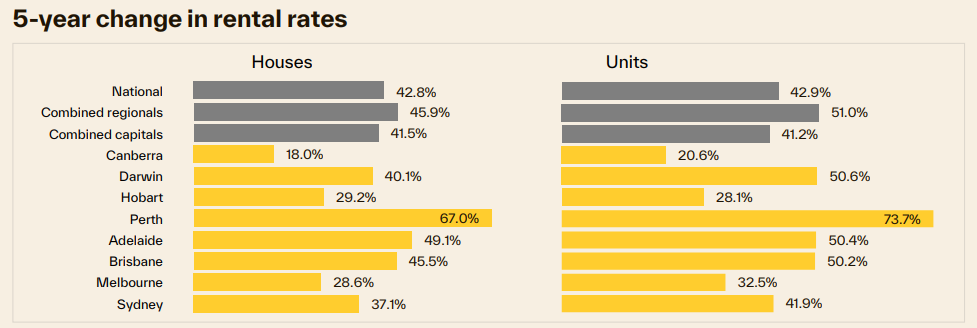
Source: Cotality
In the run-up to this year’s federal election, the Albanese government promised to reduce immigration, especially by cracking down on student visas, which Prime Minister Anthony Albanese stated were being “abused” on ABC’s Q&A in February.
However, last week’s monthly net permanent and long-term arrivals data from the ABS, which has historically been a strong leading indication for net overseas migration, revealed that immigration to Australia is increasing again.
In the first half of 2025, there were a record 279,460 net permanent and long-term arrivals, up 13,080 (5%) from 266,380 net arrivals the previous year and 108,890 (64%) from the same period in 2019, prior to the pandemic.
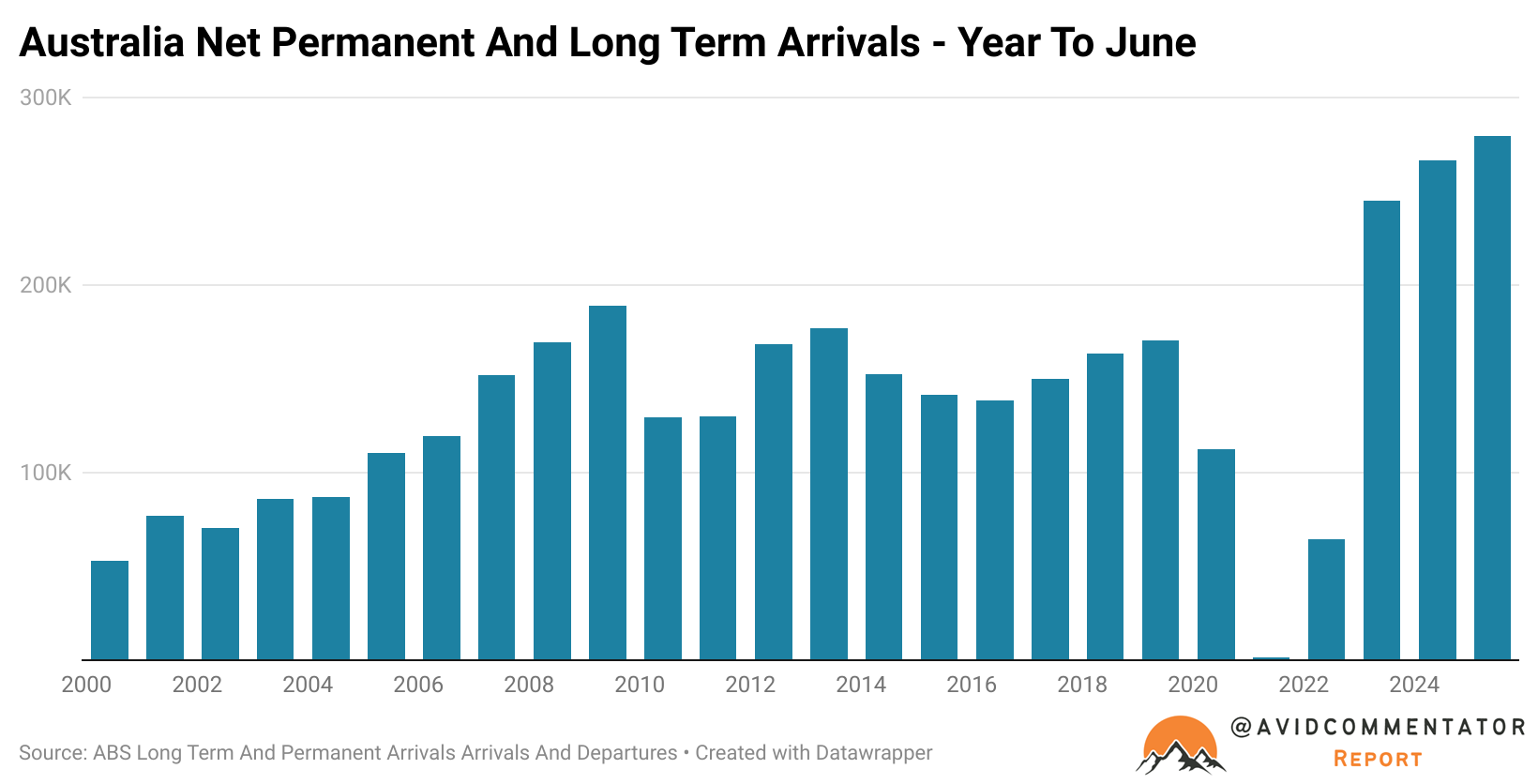
There were 457,560 net permanent and long-term arrivals in 2024–25, with the annual rate of net arrivals increasing since January.
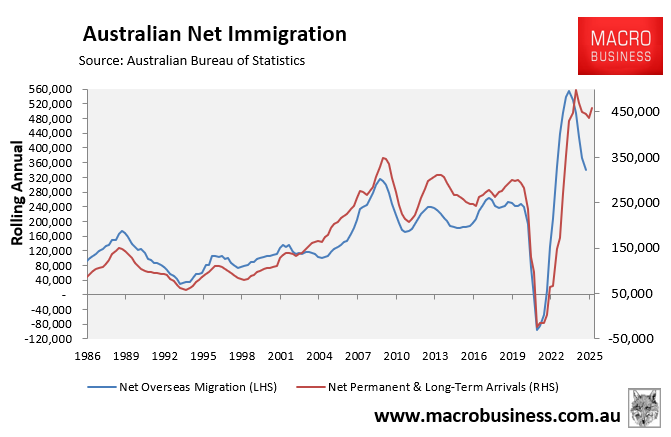
The Albanese government stated earlier this month that it had increased the planned number of international students from 25,000 to 295,000 for 2026.
Labor also dumbed down the visa system by reducing English language requirements.
As a result, Australia’s international student and temporary visa numbers, which are already the highest in the advanced world relative to its population, will undoubtedly rise.
Australia’s rental crisis will also intensify as demand continues to outstrip supply.
Meanwhile, the Australian Treasury gaslights:
Recall the recent forecasts from the National Housing Supply & Affordability Council (NHSAC), which warned that the federal government would miss its fantastical 1.2 million housing target by 262,000 dwellings over five years.
NHSAC forecasts that new housing supply will remain below population demand over the five-year forecast period, resulting in an additional cumulative undersupply of 79,000 homes.
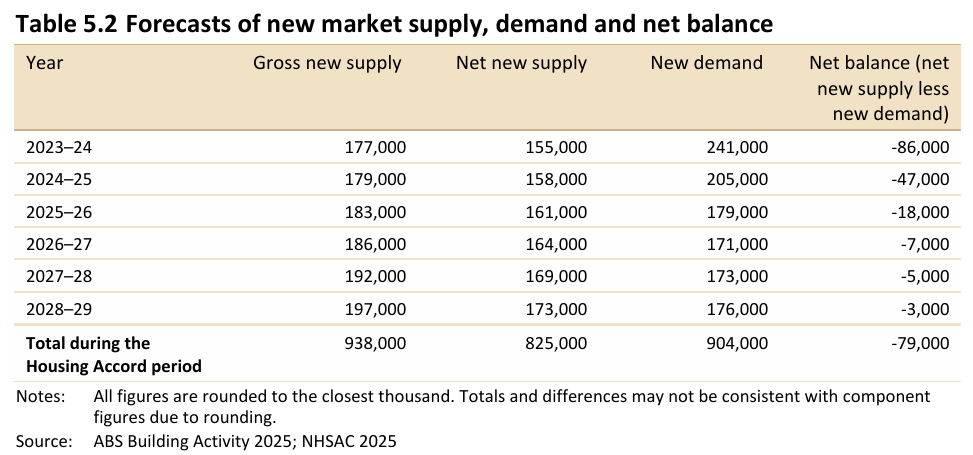
The NHSAC report warned that ongoing strong immigration, combined with poor supply, will continue to pressure renters and result in more homelessness and overcrowding.
However, NSAC’s sensitivity analysis buried at the back of its report projected a surplus of around 40,000 homes after five years if population growth is just 15% less than forecast.
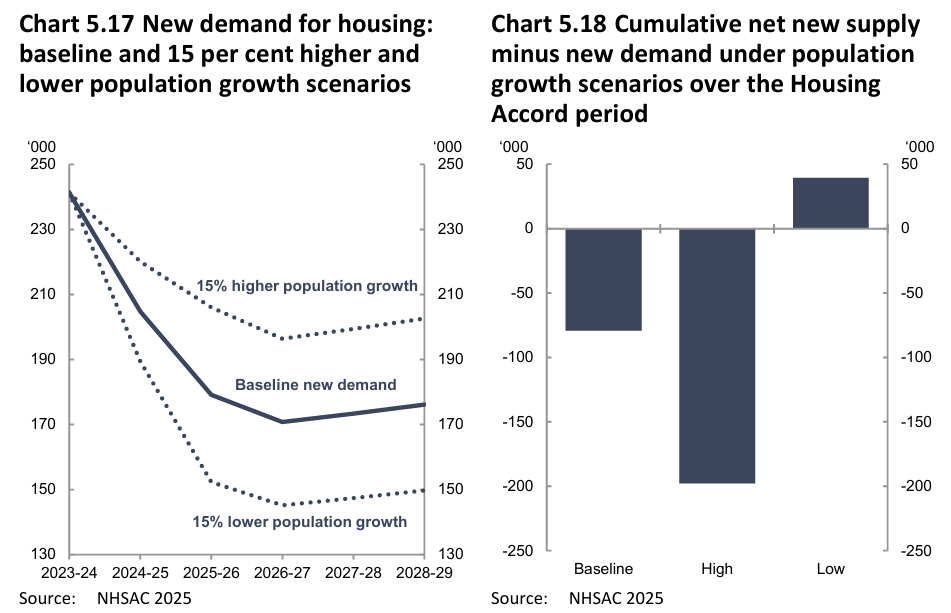
NHSAC’s report, therefore, showed in black and white that the primary solution to Australia’s housing shortage is to cut net overseas migration to a level below the nation’s capacity to build housing and infrastructure.
Enter the Australian Treasury. Instead of advising the federal government to run a smaller and better-targeted immigration program to boost productivity and ease housing pressures, leaked documents received last week by the ABC revealed that the Treasury has instead advised the government to boost housing supply by freezing the National Construction Code, which sets minimum construction standards, and using artificial intelligence to speed up planning approvals.
Treasury wants to clear a backlog of 30,000 housing approvals currently being assessed.
This is akin to fiddling while the housing market burns. The housing industry is already operating at capacity and cannot build the homes that have already been approved for construction.
Build times have blown out, as has the pipeline of unfinished homes, which numbers around 250,000 homes currently.
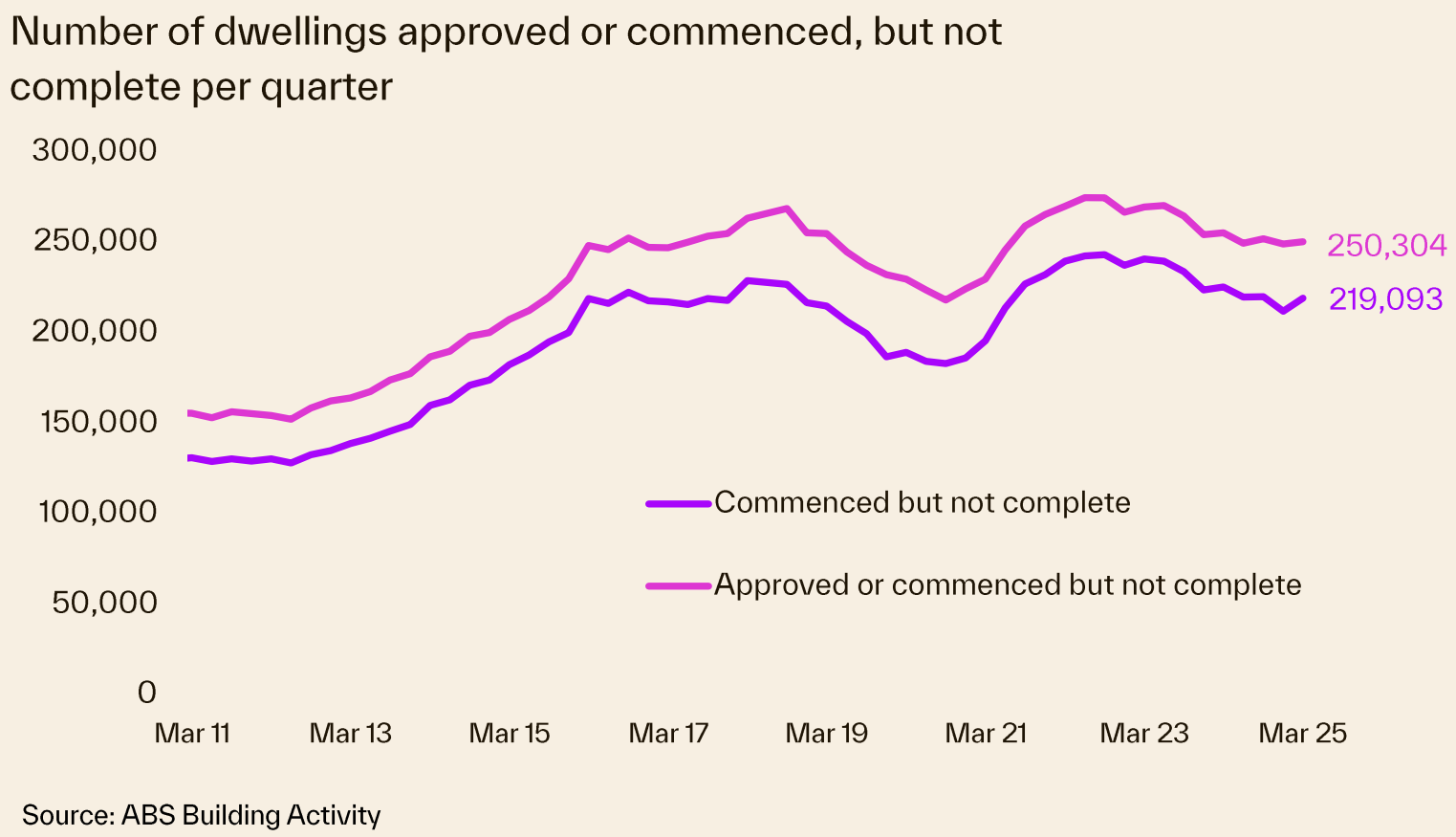
Simply increasing approvals will merely add more new projects to an already swollen pipeline and is akin to turning up the tap on a bath that is already full.
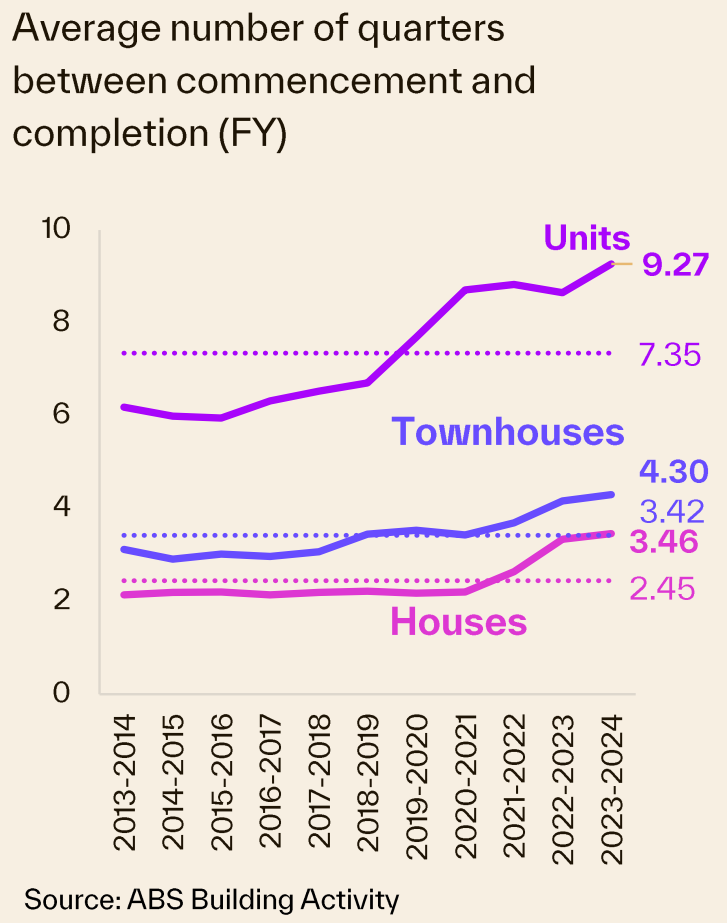
The reality is that Australia is experiencing a chronic housing shortage because its population has grown faster than virtually any other developed nation this century, which is projected by the Australian Treasury to continue indefinitely.

Source: The Centre for Population (December 2024)
Population demand has simply run far ahead of supply, as confirmed by NHSAC.
Therefore, the primary solution to the housing shortage is to match population demand with supply by cutting immigration. Otherwise, the nation’s housing crisis will forever deteriorate.
NHSAC’s modeling acknowledges these basic facts. It’s time for the Australian Treasury to acknowledge them, too.
Sadly, the Albanese government has taken the opposite approach by relaunching a second immigration boom.
I discussed this issue in detail in my Saturday Treasury of Common Sense interview on Radio 2GB/4BC.

